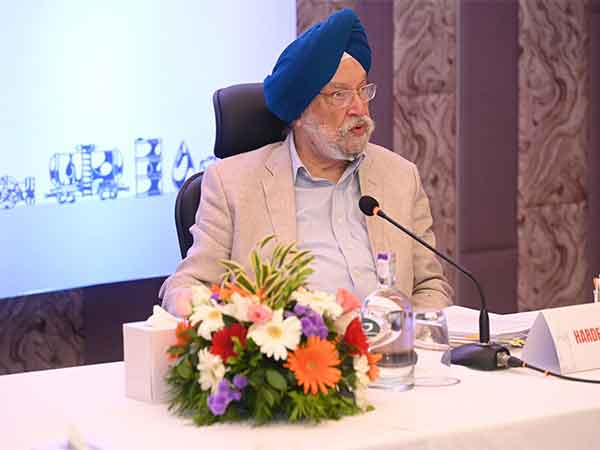Hardeep Singh Puri, Minister of Petroleum and Natural Gas, spoke at the 9th OPEC International Seminar in Vienna, Austria, addressing a gathering of leaders, industry experts, and professionals on the topic of “Oil Markets: Energy Security, Growth & Prosperity.”
Puri detailed India’s strategy to manage the uncertain global energy scenario, which includes diversifying crude import sources from 27 to 40 countries, boosting domestic production, developing alternative fuels, transitioning toward a gas-based economy, and aiming to become a global refining hub by raising refining capacity to 310 MMTPA by 2028 and expanding petrochemical capacity to build a $300 billion industry by 2030.
Despite geopolitical challenges worldwide, India has managed to balance energy availability, affordability, and sustainability. It remains the only major economy to reduce fuel prices amid rising global oil costs. “Our target is to achieve energy independence by 2047 and reach Net Zero emissions by 2070,” he stated.
He highlighted India’s renewed push in hydrocarbon exploration, announcing the opening of 2.5 lakh sq km under the OALP Round-10. “With this significant move and the near discovery of a Guyana-scale oilfield in the Andaman Sea, India is undertaking one of its most ambitious exploration efforts under the leadership of Prime Minister Narendra Modi. Our goal is to expand exploration acreage to 0.5 million sq km by 2025 and 1 million sq km by 2030,” he said.
This plan is backed by important policy changes, including the shift from a Production Sharing Contract system to a Revenue Sharing Model under HELP. Amendments to the ORD Act of 1948 aim to improve lease management, safety, and dispute resolution while integrating renewables into hydrocarbon projects. Furthermore, the reduction of ‘No-Go’ areas by 99% has opened over 1 million sq km for exploration, supported by initiatives such as the National Seismic Program, Andaman Offshore Project, Mission Anveshan, and the Extended Continental Shelf Survey.
As the world’s third-largest energy consumer with a demand of around 5.4 million barrels per day, India is positioned as both a key growth engine and a long-term stabilizer of global oil markets. “India will account for nearly 25% of the incremental global energy demand growth in the coming years,” he noted.
The Minister also emphasized the growing role of biofuels, mentioning the Global Biofuels Alliance, which now includes over 29 countries and 14 international organizations collaborating to scale up sustainable biofuels. Within India, the use of ethanol, compressed biogas (CBG), biodiesel, and sustainable aviation fuel (SAF) is accelerating as part of the country’s decarbonization plan. “India believes the global energy transition must be just, inclusive, and equitable. For 1.4 billion Indians and many more in the Global South, it must also guarantee development with dignity,” he added.
Puri also highlighted India’s inclusive approach to energy access. Over 103 million LPG connections have been provided to women from economically weaker households through the Pradhan Mantri Ujjwala Yojana — the world’s largest clean cooking program — significantly improving energy access and public health.
As a result, LPG coverage in India has surged from 55% in 2014 to nearly universal access today. Despite a 58% rise in international LPG prices, beneficiaries of the scheme pay only $6–7 for a 14.2 kg cylinder — about 39% less than the $10–11 charged in July 2023 — thanks to substantial government support and oil marketing companies absorbing $4.7 billion in losses last year to keep prices affordable.
















